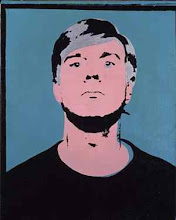 |
| Roger Ackling, Voewood, 2013 (Sunlight on wood) |
This exhibition presents Roger Ackling's last works - he died in June 2014. As I wrote on that occasion:
Roger Ackling drew with light. His working method remained remarkably consistent from the 1960s until his death - indeed, Sylvia Ackling reported that he often said that he was 'always making the same work.'(1) His method was to focus the rays of the sun through a magnifying glass and burn lines onto pieces of found wood or card. The modestly scaled pieces have about them something of Minimalism, something of Conceptual Art, something of the Wabi-Sabi aesthetic he admired. They are simple, beautiful, perfectly imperfect. (See full entry below with images and links to obituaries.)
The works in this exhibition are mainly made with driftwood and salvaged material collected by his friends and family along the beaches of Norfolk and given to Ackling: 'Simple Gifts'.
The publication of an overview of Ackling's work (Roger Ackling: Between the Lines) has been proposed as a Kickstarter project - click here to help fund it and watch a short video about Ackling and the project.
(1) Sylvia Ackling (1998), 'Lines of Latitude', in Roger Ackling: Set Aside, London: Annely Juda Fine Art, [p53]
 |
| Roger Ackling, Voewood, 2010 (Sunlight on wood) |
 |
| Roger Ackling, Voewood, 2013 (Sunlight on wood) |
 |
| Roger Ackling, Voewood, 2013 (Sunlight on wood) |
 |
| Roger Ackling, Voewood, 2013 (Sunlight on wood) |
 |
| Roger Ackling, Voewood, 2013 (Sunlight on wood with metal) |
 |
| Roger Ackling, Voewood, 2010 (Sunlight on wood) |
 |
| Roger Ackling, Voewood, 2013 (Sunlight on wood) |
 |
| Roger Ackling, Voewood, 2012 (Sunlight on wood) |




































